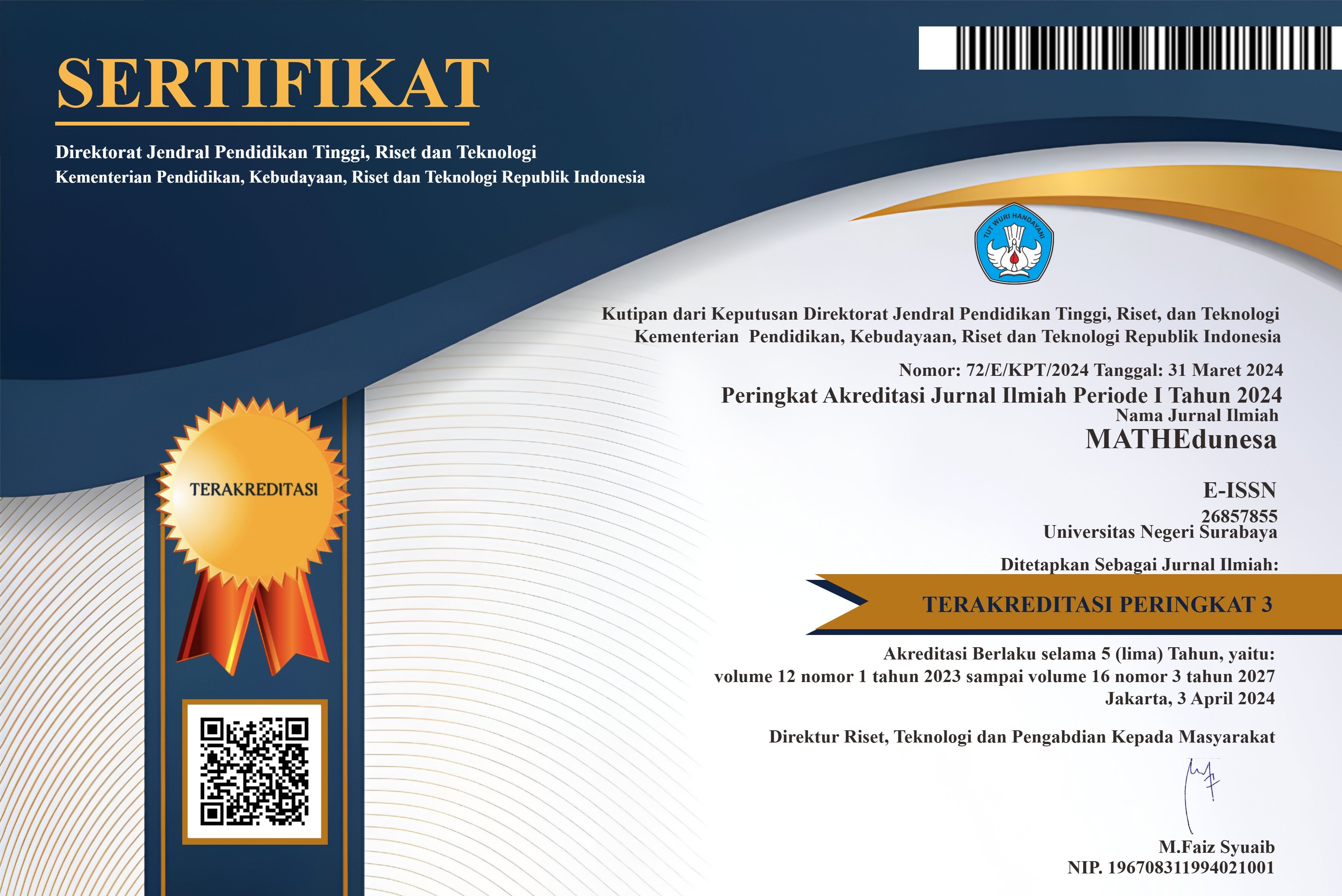Junior High School Students' Numeracy in Solving Number Content AKM Problems Based on Mathematical Ability
DOI:
https://doi.org/10.26740/mathedunesa.v14n1.p195-212Abstract
Numeracy is essential for students to utilize their basic mathematical skills optimally and be more critical in receiving and processing information. However, facts in the field show that students still need help understanding the concept of numeracy. This research aims to describe junior high school students' numeracy in solving AKM questions with number content based on mathematical ability. This research uses a qualitative approach with a descriptive research type. For the research subjects, the researchers chose three class VII junior high school students with different levels of mathematical ability (high, medium, low) by paying attention to their communication skills. Researchers used TKM, numeracy tests, and interviews to collect data. The TKM was used as a reference to determine the analyzed research subjects based on the scoring guidelines. The numeracy test and interview results were analyzed using three stages of qualitative data analysis: data condensation, data presentation, and conclusion. The numeracy test results and video-recorded interviews were analyzed by taking important parts by coding them and then presenting them in figures and tables. The results of this study show that students with high mathematical abilities could fulfill the seven basic mathematical abilities in completing the numeracy test. Students with moderate mathematics abilities only fulfilled six basic mathematics abilities in completing the numeracy test. The basic mathematical abilities that cannot be fulfilled were the ability to use language and symbolic operations because students make calculation errors. Then, students with low mathematics ability could only fulfill some numeracy indicators to solve the problem. Students with low mathematical abilities needed help communicating the process of solving writing or orally. Students could not change the context of the mathematical model and did not change the information or equations presented. In completing the numeracy test, students with low mathematical ability could not make patterns and relationships and made calculation errors.
Downloads
Downloads
Published
Issue
Section
 Abstract views: 100
,
Abstract views: 100
, PDF Downloads: 137
PDF Downloads: 137




